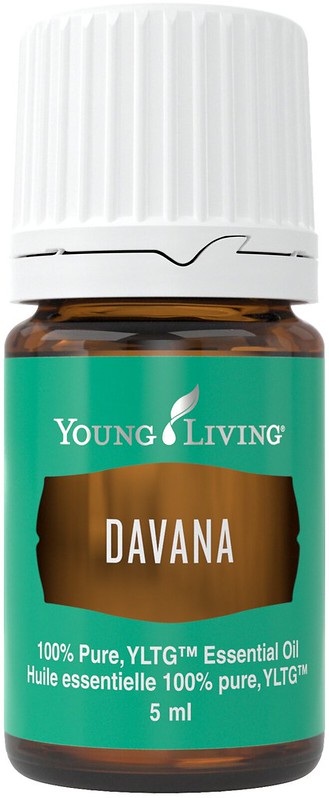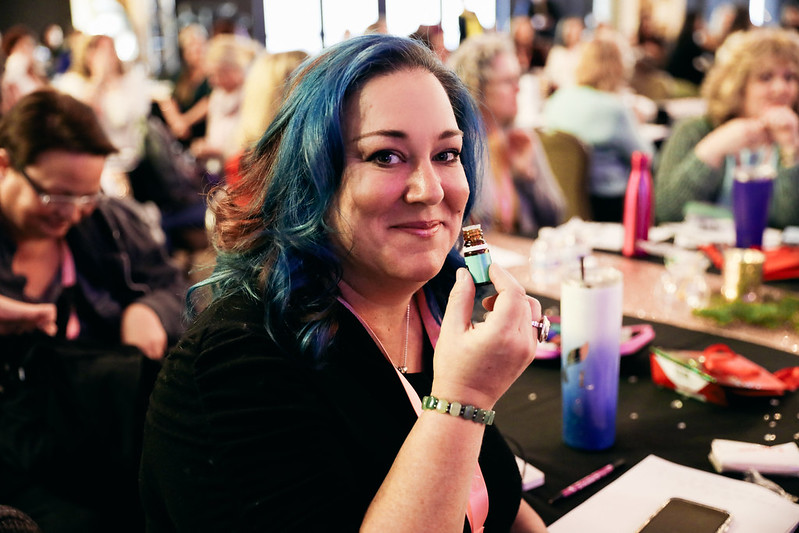The Science Behind Davana Essential Oil
Ever wonder what makes Young Living’s Davana oil smell the way it does? Have you ever tried to explain its distinctive aroma to someone who’s never used it or explain how it can help someone who’s new to essential oils? Or maybe you’ve even thought about how such a unique oil became part of Young Living’s broad and diverse offerings of essential oils and other helpful products from around the world. We recently sat down with Dr. Mike Buch, chief science officer at Young Living, for an in-depth look at the some of the science behind its Davana essential oil and the special ways it can enhance your life.

D. Gary Young Blog (DGYB): Hi, Mike! Tell us a little about yourself, please.
MIKE: Sure! I brought to Young Living almost 30 years of experience in the health and wellness industry. I have a BA in chemistry from Franklin and Marshall College and MS and PhD degrees in analytical chemistry from the University of Delaware. I’ve had the pleasure of leading organizations at some of the world’s leading companies, which has resulted in more than a dozen patents in the health care field, several books, and numerous published articles in peer-reviewed scientific journals. I’ve been personally responsible for developing health care products with annual sales of nearly $3 billion, and those products have been marketed in more than 100 countries. I’m also honored to be a member of several prestigious associations, including the American Association for the Advancement of Science and the Institute on Science for Global Policy, where I’m a board member.
When not at work, I enjoy fresh and saltwater fishing, and I love photography.
DGYB: Wow! And what’s your favorite Young Living product?
MIKE: I have a lot of favorites, but right now I’m using a lot of Kunzea.

DGYB: Kunzea has definitely become an instant classic. Can we talk about another new-ish YL essential oil: Davana? Where do we get it from?
MIKE: Davana is an aromatic plant native to India. Actually, that’s where our sourcing people found it. We’ve been focusing our efforts on that area of the world because of ayurvedic medicine, which is traditional Indian medicine. It’s kind of a cross between traditional Chinese medicine and Western medicine. It goes back for thousands of years, and personally, I think if billions of people over thousands of years have thought something works, it probably does. Ayurvedic medicine is supported by studies and is well-documented in the ayurvedic pharmacopeia, a sort of dictionary of ayurvedic medicine.
Our sourcing team traveled to India to bring us Davana. It is distilled from Artemisia pallens, a plant in the daisy family, which is native to India.
DGYB: That’s interesting. I know davana was traditionally used by Ayurvedic healers, and blossoms of the plant are offered in India to the Hindu Lord Shiva, the God of Transformation, by that religion’s faithful. They decorate altars to him every day.
MIKE: That’s right. The oil has been known to heighten spiritual senses. We distill it from the plant’s beautiful yellow flowers, as well as from the leaves and stems, or what we call the “aerial” parts of the plant, the parts that are exposed to the air. Davana is not known very much outside of India. It’s highly sought after for perfumes because it’s very fragrant.
DGYB: And why is it so fragrant?
MIKE: Actually, its primary constituent, davanone, is a ketone, and this particular ketone has a 15-carbon chain, which makes it a sesquiterpene, which is a relatively heavy molecule. Of all the molecules that are “volatile,” (meaning that they are able to evaporate), it’s one of the heaviest. So oils with molecules that are much bigger (i.e., heavier) than that just won’t evaporate. They don’t go into the air at all. You won’t smell them. So they won’t be aromatherapeutic if they’re heavier than a sesquiterpene.
DGYB: So, the heavier the essential oil molecule, the less aromatic they are?
MIKE: Right, because these big heavy molecules don’t evaporate as much. Just imagine that the lighter molecules “fly up” into the air more and are actually the most aromatic. Ones that are heavier take a little longer for their scents to reach your nose.

So when you smell Davana, you’ll smell different levels of aromaticity: you’ll smell the light notes first, so you’ll smell things like ethyl cinnamate. That comes off first because it’s a smaller molecule. And then the heavier ones, like davanone and bicyclogermacrene, come off a little later. It’s really interesting to take the cap off a bottle of Davana. Immediately you smell it, and then if you wait two minutes or so and smell it again, it’ll smell different. Different molecules are coming off at different rates.
That’s why it smells different on different people. They say in the books that it behaves differently with different people’s body chemistry. Personally, I think it has more to do with your skin temperature, because different molecules lift off at different temperatures, and it’s a nice mixture of light and heavy notes.
DGYB: Fascinating.
MIKE: Yes, Davana is an interesting one. It’s extremely fragrant. If you smell it out of the bottle, it’ll smell different than if you put it on your skin because of those different molecules coming off at different times.
DGYB: Davana seems to me to have a sweet, warm, rich, exotic aroma. I know it helps to reduce feelings of occasional stress. I like how it supports a positive outlook and radiant skin, both of which are things I like!
Also, it’s good to know that we’re continuing the tradition of exploration and innovation that Gary established.
MIKE: Yes, we are. With this and many other products.
DGYB: Awesome! Any final thoughts?
MIKE: Just that, as much as we miss Gary, he was able to establish a great foundation here, and things are continuing to move forward in his tradition. At Young Living, we continue to innovate, get better, and grow.
Stay tuned to DGaryYoung.com/blog for more monthly posts with Mike!

